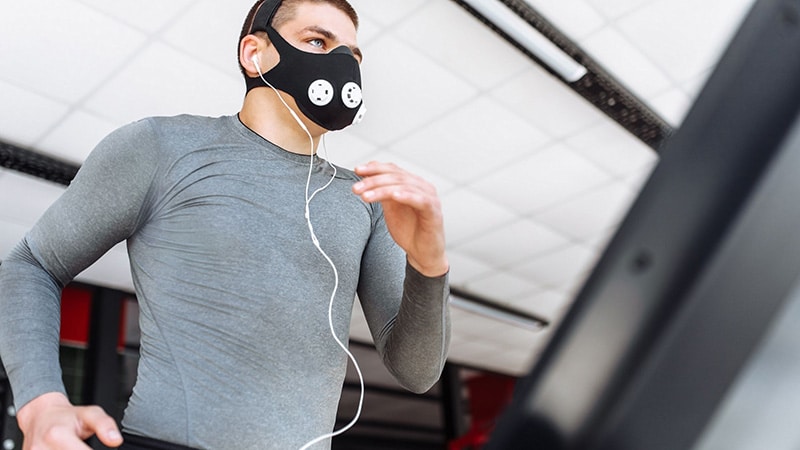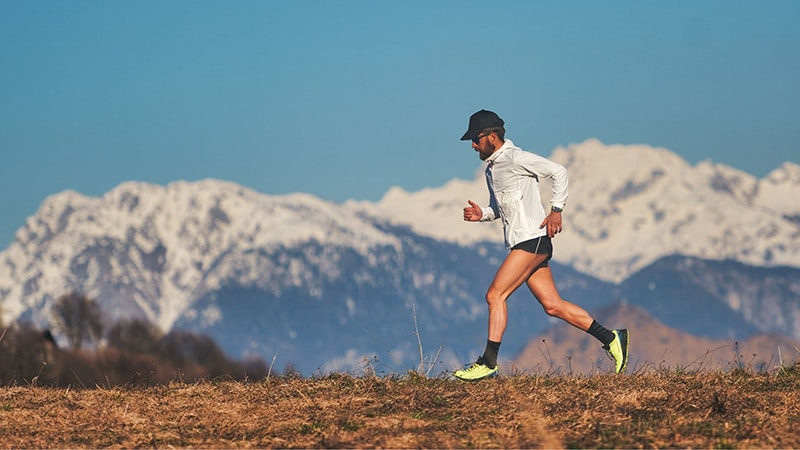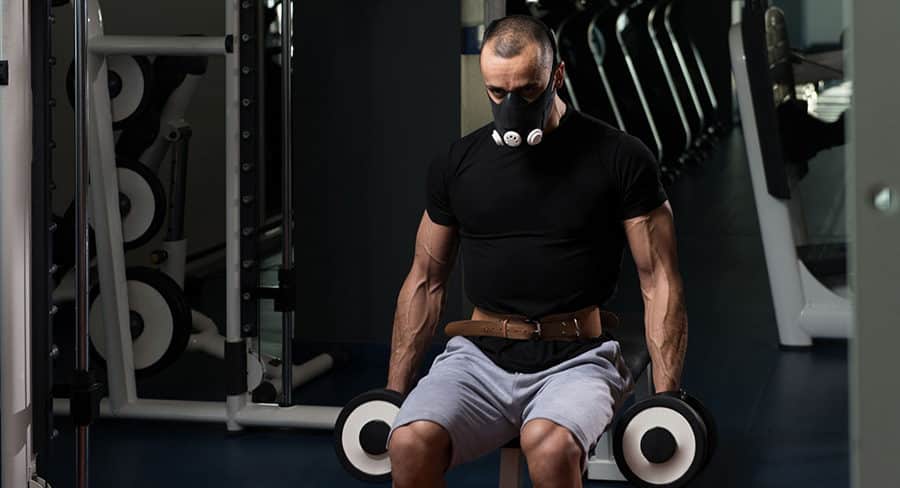Designed to reproduce the benefits of physical activity at altitude, the training mask is a fitness accessory that is increasingly used by runners and combat sports enthusiasts. It is also starting to appear in the gyms. But then, what is it really? Is the training mask really useful for bodybuilding?
What is the purpose of a training mask?
Also known as training maskThe training mask is a classic mask. Generally made of nylon, it is placed on the mouth and nose and has a system of air regulation with several levels. In other words, this sports accessory aims to limit the amount of air available during physical training. This device aims to reproduce the conditions of a sports activity at altitude.
The benefits of altitude training
To better understand the expected effects of a training mask, let's look at the mechanisms to which the human body is subjected at altitude.
This has been known for a long time, training at altitude allows athletes to improve their physical condition. It is to take advantage of these benefits that many professional sports teams carry out their physical preparation at the beginning of the season in the mountains, in Tignes for example for the French soccer team. Or that the American Olympic center is based in the suburbs of Denver (in Colorado Springs to be precise), in the state of Colorado, the highest in the United States.
The air we breathe is composed mainly of nitrogen (78 %) and oxygen (21 %). At altitude, the atmospheric pressure literally drops. This means that there is less nitrogen and oxygen in the same volume of air when you are at 1500 meters than when you are at sea level.
In scientific language, this lack of oxygen due to a reduction in pressure is called a hypoxia hypobaric. When an athlete performs physical training in this situation, the body is forced to adapt. It then increases the quantity of red blood cells produced in order to carry more oxygen to the muscles.
For athletes training at altitude, the objective is that this additional energy supply is then continued under "normal" conditions. Whether aerobic or anaerobic, several studies have shown that training under hypobaric conditions improves VO2max and muscle power.
On the other hand, these benefits would be limited in time and would last only a few weeks. Faced with this observation, several brands specialized in the fitness and cardio-training sought to design an accessory to reproduce the conditions of training at altitude. This is how the training mask was born.
How does the training mask work?
The objective of the training mask is to reproduce the conditions of a hypoxia situation, without influencing the atmospheric pressure of course. To do this, several valves allow to modulate the air volume available to the athlete, with different levels of difficulty.
Limiting incoming air would allow the development of respiratory system during physical exercise. In addition to enhancing lung capacity, the manufacturers of these sports masks highlight several benefits:
- development of cardiovascular endurance and performance,
- an improvement of the muscular strength,
- Optimization of training (a 20-minute session with a lift mask would replace a traditional 60-minute activity).
Do a training session with a training mask would allow you to work your cardio more efficiently and to improve your physical condition. Many coaches and athletes have also taken hold of this accessory, starting with MMA (mixed martial arts) practitioners and running enthusiasts. Several NBA and NFL players have also been wearing masks in recent years, during warm-ups before games. But what is it really?
Is the training mask really effective?
What the scientific studies say
Various studies have looked at the impact of training masks on sports practice.
In a study conducted in 2016 by American researchers from the University of Wisconsin, two groups of 12 individuals were observed for 6 weeks. Each group underwent the same moderate-intensity sports training on an ergometer. The members of one of the two groups wore a training mask during each session, while the other did not.
At the end of the 6 weeks, the researchers concluded that the elevation mask did not replicate the conditions of altitude training. However, they did observe a slight improvement in VO2Max for individuals in the masked group.
Another study, this time conducted in 2017 by the kinesiology department of the famous Texas A&M University, looked into the subject by analyzing the effects of the training mask on VO2Max. The researchers compared the performance of two groups training for 7 weeks.
In contrast to the first study, they found no significant differences between the two groups, evidence that the benefits of the training mask are still far from obvious. However, the researchers indicated that the main limitation of the study was the low number of training sessions (3 per week) performed by the individuals observed. Such a volume would not allow the organism to benefit from the effects of this accessory and to improve its physical condition.
If the effects on respiratory capacity have not been proven by the various scientific studies carried out, is there any point in wearing a training mask during your weight training sessions?
What about weight training?
To find out if wearing a training mask during your strength exercises can improve your performance, let's look at the science again.
According to the conclusions of several studies, practicing muscle strengthening in hypoxic conditions would allow toimprove hypertrophy and strength gain.
On the other hand, it seems that simply wearing the training mask does not allow to reproduce this situation to benefit from it. A 2018 study analyzed the performance of two groups of weight trainers on the squat and bench press exercises.
The researchers did not find similar benefits to training at altitude. Worse, they concluded that wearing the elevation mask had a negative impact on the quality of the session. Because of restricted breathing, athletes wearing the mask had more difficulty completing sets and staying focused on the task at hand.execution of movements. Their workouts were therefore less intense, which is a real hindrance to achieving a goal of muscle mass gain or weight loss.
For the time being, science has not shown any particular interest in using an altitude mask in the weight room or fitness center. During your weight training sessions, it can even harm the quality of your workouts and slow down your progress. Neglecting the quality of execution during physical exertion can lead to injury.
In weight training, breathing plays a fundamental role. To progress and work safely, it is essential to be able to breathe correctly. Therefore, whether you are beginner or more experienced, wearing a training mask as part of your strength training program is not recommended.
On the other hand, it can be useful for your training sessions cardio-training (HIIT, Tabata, etc.). Whether you're doing burpees, jumping jacks or mountain climbers to burn calories, the training mask will break up your routine and push you to your limits. It will make your workout more challenging and prepare you for high intensity efforts.
Finally, you should know that the price of a training mask varies between 40 and 100 eurosdepending on the quality of the model.
Conclusion
If its effectiveness has never been proven by science, the training mask has nevertheless become an accessory appreciated by many athletes. However, it is not recommended to use it in bodybuilding as it can slow down your progress. Whether it's a fashion statement or a real tool for improving performance, everyone will make up their own mind. And if you train regularly with a training mask, don't hesitate to share your opinion in the comments.









